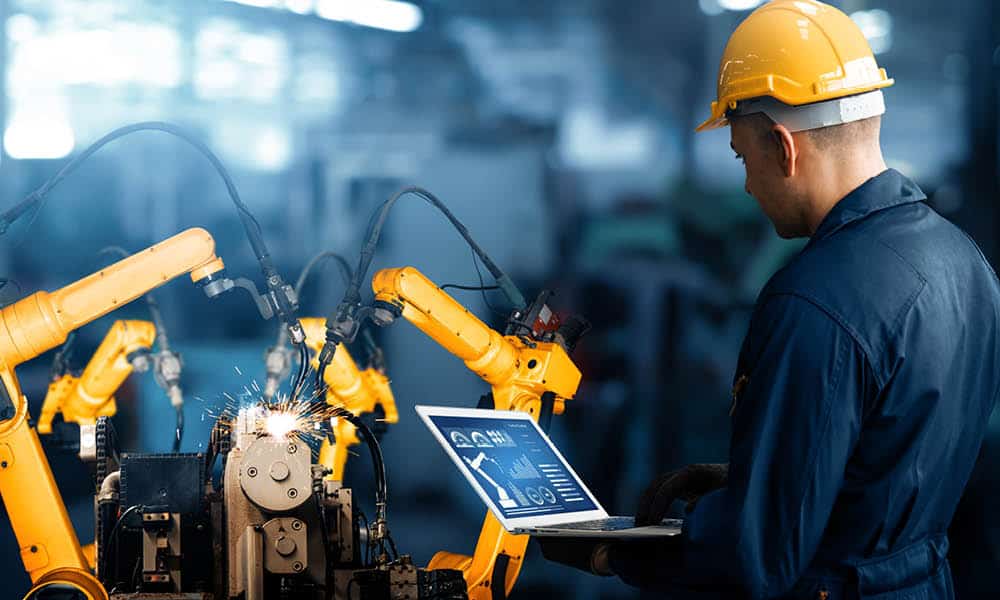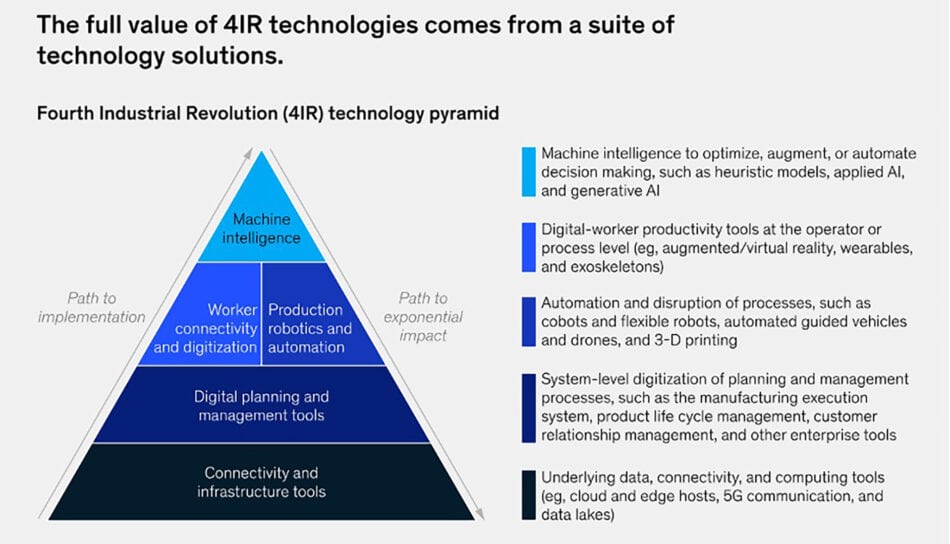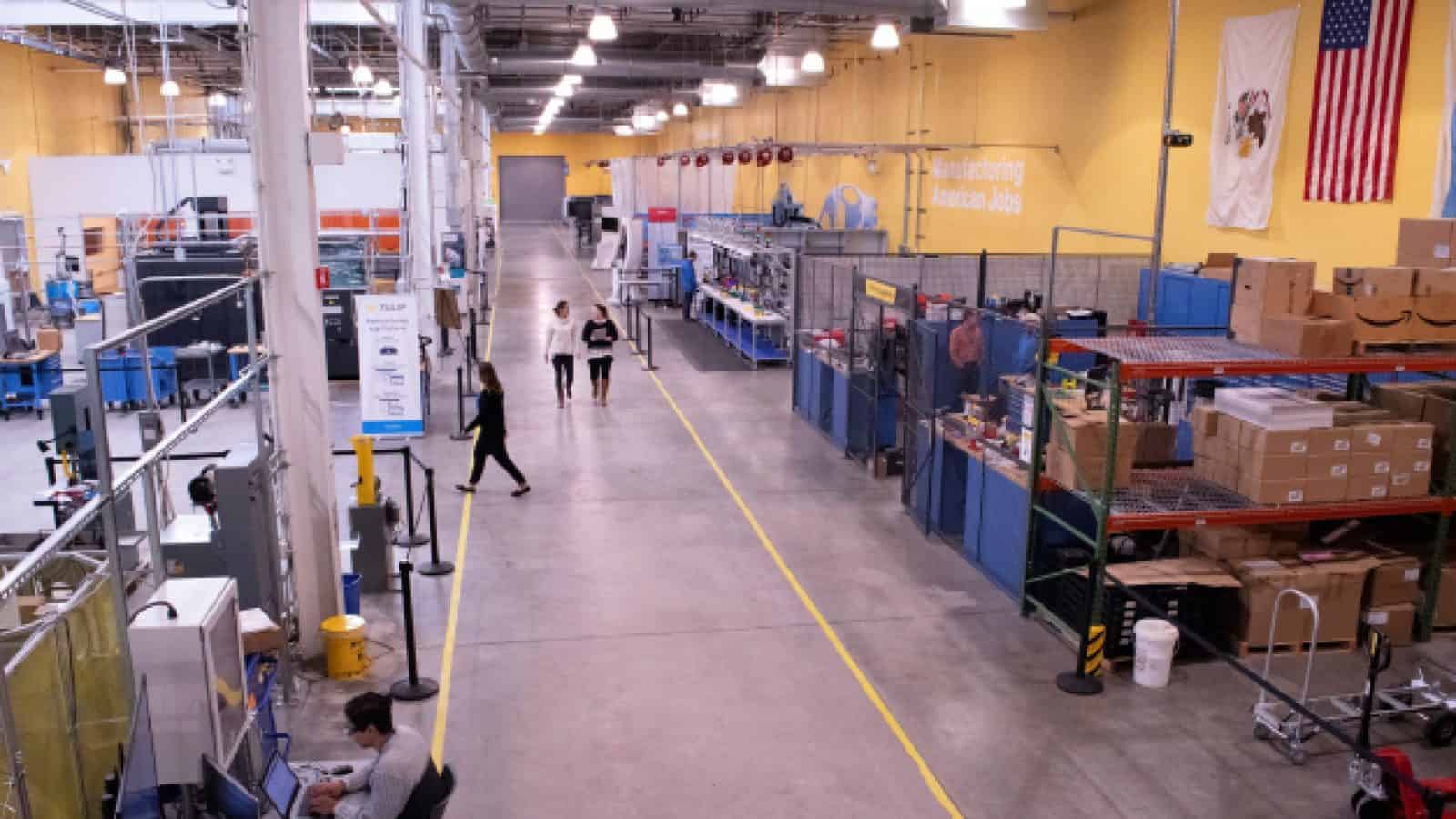Building Better: AI as the Fast Track to 4IR Technology Adoption

The Fourth Industrial Revolution is set to enter hyperdrive as generative AI and other AI tools prove their value in manufacturing and spur the adoption and time to impact of other technologies.

TAKEAWAYS:
● AI’s impact is bigger than a combination of use cases, able to orchestrate the complex interplay of a range of platforms, devices, and environments.
● The impact of gen AI is extending beyond the shop floor.
● Manufacturers that have already invested in their data foundation and infrastructure will be better placed to move quickly with AI and gen AI.
We now have enough evidence that AI is fundamentally transformational for manufacturing, when implemented correctly. This is perhaps best illustrated in the Global Lighthouse Network; a community of manufacturers using Manufacturing 4.0 technologies to transform factories, value chains, and business models.
The most recent cohort of Lighthouse factories has seen compelling returns from AI—both traditional AI tools such as machine learning for yield optimization, and generative AI. Individually observed results range from a two to three times increase in productivity and a 50 percent improvement in service levels to a 99 percent reduction in defects and 30 percent decrease in energy consumption.
But AI’s impact is much bigger than the combined impact of individual use cases. Its true power may come from its position at the top of a pyramid of Fourth industrial Revolution (4IR) technologies, from where it can orchestrate the increasingly complex interplay of wearables and devices, flexible robotics, integrated platforms, and cloud environments.
Putting AI at the top of the technology pyramid effectively allows it to conduct a symphony of impact by unlocking the full value of 4IR technologies (Exhibit 1).
Exhibit 1

Generative AI is only going to amplify AI’s machine intelligence capability and speed up the digital transformation of manufacturing. Those manufacturers who have built up knowledge, skills, and data foundations to support their ongoing 4IR transformations will be first out of the blocks with gen AI, too.
Speed and scope: Generating results from AI and gen AI
The ongoing AI adoption journey among Lighthouses reveals five insights into how frontrunners are driving impact from AI and gen AI.
1. AI use cases are prolific across the whole operations value chain
While more than 80 percent of Lighthouse use cases involving AI are executed at the individual process level, AI is making a significant impact at every supply chain step—including planning, asset management, quality, and delivery. In quality, for example, VitrA Karo, a ceramics manufacturer in Türkiye, has decreased its scrap rate by 68 percent by deploying computer vision in its kiln. And in delivery, China Resources Building Materials Technology, a concrete and cement manufacturer, has optimized its heavy-transport equipment routes to decrease pickup lead times by 39 percent.
2. AI can be assetized to enable deployment at speed and scale
One of the ways that Lighthouses have sped past pilots is by packaging use cases for speed and scale of deployment, leveraging modular design principles to ensure interoperability with existing technology architecture. Agilent, a life sciences equipment manufacturer in Germany, assetized its computer vision technology into a tool kit that enabled five distinct computer vision use cases to be deployed, reducing defect rates by 49 percent in just four months.
3. AI command centers are enabling next-level and system-level automation
Lighthouses are prioritizing closed-loop feedback to improve their models and increase confidence intervals, while also integrating safeguards, monitoring mechanisms, and overrides to reduce risk. Mondelēz, a global snack-food manufacturer, has adopted an AI control center that spans five automated production lines, four intelligent guided vehicles, and nine ingredients in the supply chain—enabling it to optimize processes, analyze consistency, and improve capacity and speed across production lines and supply chains.
4. Gen AI is extending AI’s impact beyond the shop floor
Gen AI could be applied to automate nearly 70 percent of tasks across manufacturing and supply chain-related activities, primarily driven by new capabilities in content generation, insights extraction, and user interaction. New use cases involving unstructured data, like product development and procurement-related activities, could enable robust digital transformations to happen faster than the usually expected two to three years.
5. Gen AI is speeding past pilots, too
Today, the starting line for gen AI is far more advanced than it was for applied AI five years ago. The time it takes new Lighthouses to implement AI use cases has fallen by nearly 25 percent compared with earlier cohorts, and some are even skipping pilots altogether. ACG Capsules, a pharmaceuticals contract manufacturer in India, used gen AI to fully develop and deploy a copilot to interface with standard operating procedures (SOPs) in less than five weeks, reducing mean time to repair (MTTR) by 40 percent.
****
AI’s position at the top of the technology pyramid is expected to fast-track the adoption and optimization of 4IR technologies that make up the connected, intelligent factory of the future.
Those manufacturers that have already invested in their data foundation and infrastructure will be better placed to move quickly with AI and gen AI. And for manufacturers that have been slower to realize their 4IR ambitions, gen AI could be the technology wave that finally kickstarts their wider transformation journey.
****
The Global Lighthouse Network is a World Economic Forum initiative co-founded with McKinsey, identifying guiding lights that inspire transformational change, exemplify collaboration, and shape a better future for all players in the operations ecosystem. Learn more about the Global Lighthouse Network and how to benefit from the digital transformation playbook they have inspired by contacting the authors directly or by following the application process to be part of the next wave of Lighthouses, here. M
About the authors

Kevin Goering is a partner at McKinsey based in the Bay Area,

Enno De Boer is a senior partner at McKinsey in New Jersey.

Rahul Shahani is a partner at McKinsey based in New York.

Henry Bristol is a McKinsey consultant based in New York.
